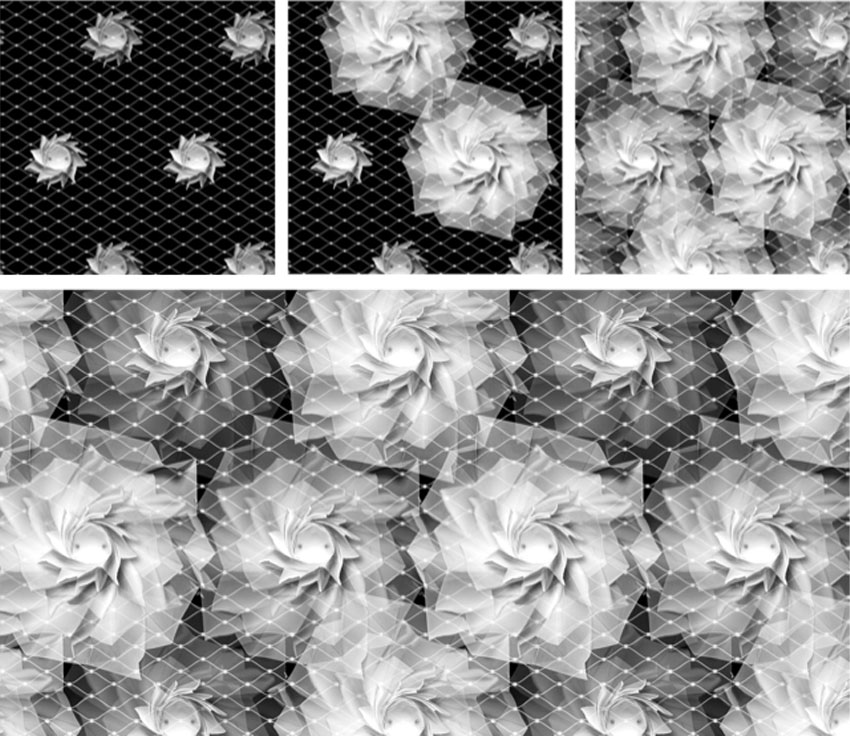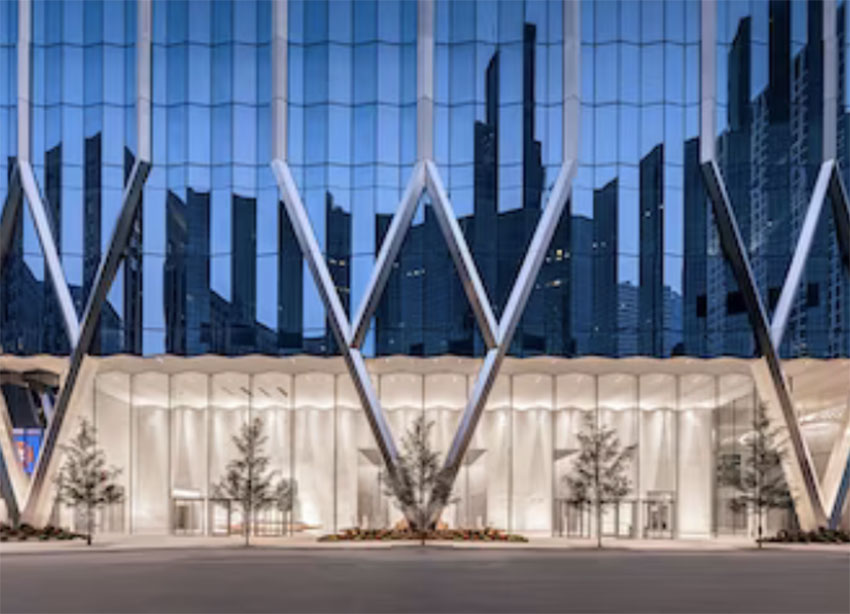The Active Adaptive Facade
Triple glazing is now standard in Europe because of code requirements, Patterson notes, and some applications there are using quad, but in the U.S., efforts to strengthen codes encounter opposition: “Industry shows up. There's a lot of people with vested interests that don't want to see these changes, and they show up in numbers and argue against the adoption of these codes, and they do it successfully.” Despite performance goals for 2030 or 2050 set by public agencies, “they are also mandated through the legislature to not do anything that's going to cost more money.” When industry representatives claim during code-modification discussions that they can meet performance goals without substantial initial investment, FTI recurrently argues that this corner-cutting approach is impossible.
Vacuum-insulated glazing (VIG) is another case in point, he says. After proof-of-concept studies in the early 1990s and the initial appearance of a commercial product in 1996 (Kocer 2020), manufacturers publicized this approach, but VIG is “still only very marginally competitive in the marketplace, and only in very special circumstances.” VIG offers exceptionally low thermal conductance – as low as 0.5 watts per square meter per kelvin or potentially lower – but has made more headway in Asia and Europe, according to industry observers. Patterson describes VIG and other technologies as constrained by “a chicken-and-egg problem,” where wider adoption could lead to more investment in fabrication plants, scaled-up production, and lower costs, but current costs hamper adoption; some form of subsidies may be required to overcome this conceptual bottleneck. The glazing technologies he calls “X-chromics” (photochromics, electrochromics, and thermochromics) have been more competitive, he notes, after years of product development and incremental progress in the marketplace. BIPVs need to follow a similar path if they are to attract demand and attain a market share commensurate with their energy-harvesting potential (see “To BIPV or Not to BIPV,” below).
Because early curtain-wall systems from the mid-20th century are difficult to replace, Patterson notes, “many of them are sitting un-renovated in the New York City marketplace despite the recent boom economy, because it's just too expensive and too disruptive to ongoing building operations to change.” Given that a facade often accounts for about 25 percent of the total cost of a building, he adds, “the building industry is very conservative, very risk-averse” in this area, and the argument for higher-performing technologies needs a key persuasive point: assuring building owners that the long-range payback will be sufficient incentive.
Patterson has a vision of a modular product, yet to be developed, that could make such an upgrade as simple as changing a tire. “A fully integrated plug-and-play window system could be developed with relative ease and be a real game-changer,” he suggests. All the needed technology is there on the shelf, but not as an assembly available from a single-source manufacturer: a dynamic, automated, operable window assembly including solar-control glazing, shading and glare control, sensors and controllers, software-ready to link into the building management system to provide an interface between the facade system and the building mechanical, HVAC, and lighting systems to provide coordinated optimum efficiencies between these systems. The window system [would be] provided as a single-source product, serviceable as necessary and with a minimum five-year warranty. There is no such product in the market. Architects and building owners would love it. This is an easier thing to accomplish than what the lighting industry did in developing LED technology. But, as with the development of the LED, it takes an investment.”
FROM R&D TO THE MAINSTREAM
Value engineering (VE) may be an inescapable part of negotiations as a building passes from design to construction; it is also often the point where useful innovations go to die. “The architects,” Patterson says, “want to do the BIPV thing. I saw a lot of projects come out that included photovoltaics in the facade system, and it almost invariably got VE'd out. You could bet that if your project came out and had a lot of BIPV in it, it wouldn't last through the design process.”
Oliva has had similar experiences with BIPV: “In the U.S., the projects that I have been following... we've tried to implement that solution. As it turns out, it would either be VE'd or be forgotten or no longer be considered interesting a third of the way through the process.” As the American office of a German-based firm with strong links to academia, WSNY is positioned between Europe's leading-edge research world and the cautious American market, striving to foster technology transfer from the former to the latter. The University of Stuttgart's Institut für Leichtbau Entwerfen und Konstruieren (ILEK, a.k.a. Institute for Lightweight Structures and Conceptual Design), currently headed by Werner Sobek managing partner Lucio Blandini, was founded by Frei Otto and run by Sobek for decades; ILEK's research explores adaptive facades and materials-saving efficiency in load-bearing and non-load-bearing structures. “When it comes to innovation, we are a little bit spoiled at Werner Sobek, because we see what's coming that maybe for a year or two people won't hear about as widely, unless you go to Facade Tectonics and to all these symposia.”
Approaches that have succeeded in the realms of R&D and competitions, like WSNY's 2020 Metals in Construction Design Challenge finalist entry in collaboration with SOM and Atelier Ten, using VIG with titanium spacing rings in the ultra-lightweight overcladding of a hypothetical commercial retrofit at 63 Madison Avenue in New York, ideally lay the groundwork for the firm's commercial projects. The VIG/titanium concept emerged from the firm's work on the prototype house built in Stuttgart's Weißenhof development, Aktivhaus B10, whose rooftop PV system generates twice as much energy as the house itself uses, powering a neighboring museum and two electric cars as well (Heinlein 2015). “You often see technologies that are completely unattainable,” Oliva says, “and then at a certain point, a few years later, they become actually affordable, and they can be implemented in a real project.” Some projects have not yet overcome cost-cutting concerns even after studies that the engineers consider persuasive, including return-on-investment studies and analyses of building geometry and optimal PV-panel placement. In other instances, WSNY has developed a new facade strategy on a smaller project and extended it to a larger one (see Case Studies, “320 South Canal Street”).

Photo © Christina Eisenbarth/ILEK
The pneumatically actuated origami sun shading (PAOSS) facade system, a research work by the Institut für Leichtbau Entwerfen und Konstruieren (ILEK), uses folding textile elements incorporated within cushions of ethylene tetrafluoroethylene (ETFE).
Another facade technology with a long history of availability and increasing construction applications, Oliva notes, is inflatable ethylene tetrafluoroethylene (ETFE) cushions. First used on a large scale architecturally in 2001 at Grimshaw's Eden Project in Cornwall, UK, and subsequently included in prominent projects like the Beijing Olympics Water Cube (PTW Architects and colleagues, 2008) and The Shed at Hudson Yards, New York (Diller Scofidio + Renfro, 2019), ETFE can offer variable shading, glare protection, and thermal performance along with its well-known high ratio of strength to weight. WSNY, having worked with prominent ETFE supplier Vector Foiltec and John Ronan Architects on the Ed Kaplan Family Institute for Innovation and Tech Entrepreneurship at Illinois Institute of Technology in Chicago (2018), among other projects, is studying further uses of ETFE at “the largest and first demonstrator building in the world, which is a 12-story building that we built at the ILEK; it hosts 12 potential new facade technologies, one per story” and uses springlike hydraulic actuators to measure the building's response to wind, seismic, and other forces.
“What if our shading could be customizable,” Oliva asks, “and then virtually disappear when we don't need it and we want to take maximum advantage of some solar light and heat?” The object of one current investigation at ILEK's demonstrator building is Pneumatically Actuated Origami Sun Shading (PAOSS), “an adaptive facade system that can be incorporated inside of an ETFE cushion and folds back when you want to flatten the ETFE cushion with a technology related to origami” (Eisenbarth et al. 2021). Inspired by NASA's Starshade pneumatic device for managing glare from starlight for space telescopy, the textile-based PAOSS opens into floral-shaped patterns and “pulls back to virtually no thickness,” Oliva says. PAOSS builds on the known properties of ETFE to suggest new ways for adaptive facades to extend a building's thermal versatility while minimizing its material footprint.










